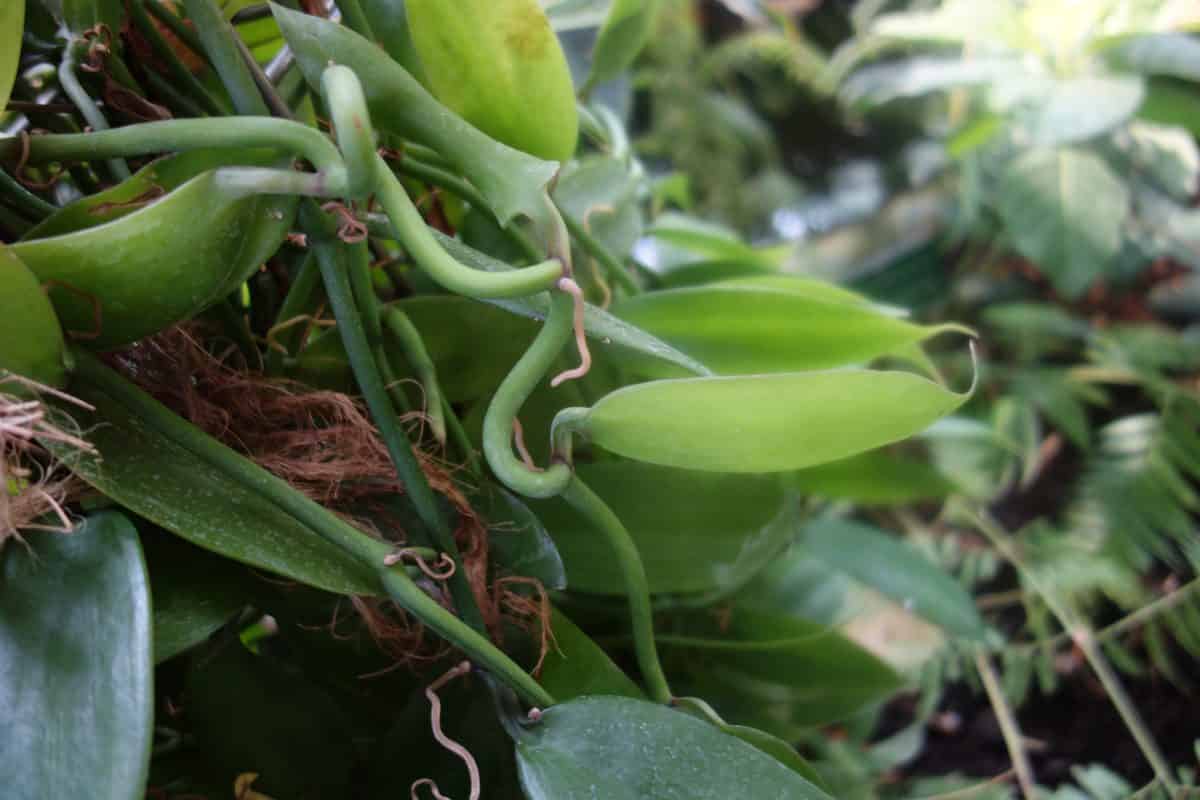Growing and Cultivating Vanilla Plants

Photo: Jean.claude via OpenVerse
The vanilla plant is an orchid. There are approximately 110 species of vanilla orchid, but only two of these produce commercial vanilla. About 15 species are found in Mexico. Vallarta Botanical Garden has a great selection of orchids on display.
Vanilla was first discovered in Mexico and used by the ancient inhabitants. Today vanilla is growing around the world in tropical areas. Madagascar and Indonesia are the top producers of vanilla, although Mexico still produce large quantities for export.
Vanilla is a Labour Intensive Food Crop
Vanilla is the most labour intensive food crop in the world. It is the worlds second most expensive spice. It is the worlds most popular flowering flavouring used in candles, baked goods and manufacture of soft drinks. Vanilla is also commercially used to flavour medicines, and in other products, such as paints and cosmetics. Vanilla can be produced synthetically, but is of inferior quality. Vanilla is a sustainable resource and helps preserve the forests. When buying vanilla , purchase only pure vanilla produced from plants.
Growing Vanilla
The vanilla plant is a type of orchid and a climber that grows on a tree or on a structure like the wooden poles in many plantations. Under the right conditions, the vanilla orchid vine can reach up to 30 m or 100 feet height. Read our article how Orchid care is about recreating habitats.
Pollination
Vanilla flowers are pollinated be hand. As a consequence, Vanilla growing on plantations need to be controlled to keep them low and easily workable. Because of the special work that is required to be done for pollination, the vanilla flowers should not be allowed to develop out of reach. If the growth of the vanilla vine is not controlled, the vine will naturally climb out of reach into the treetops on plantations in important job is a concentrating of the vines to grow on their designed to sign post play, bending the plan back down upon itself care must be taken when bending the vines back towards the ground, as they are naturally brittle and break easily.
Vanilla Flowers
Vanilla flowers are yellow to pale green and measure 7.5 cm or 3 inches long and are composed of different parts. Three sepals, two petals, the column – which is the organ containing the anthem and the stigma – located in the center, which is surrounded by the lip. The rostellum, a tissue that separates the anther and the pollinia from the stigma, prevents self pollination pollination in nature. The vanilla flowers are born in a cluster of 15 to 20 flowers for stem.

Pollinating Vanilla Flowers
When the flowers are pollinated and fertilized, the ovary, that is on the lower part of the flower, begins to thicken and forms the vanilla bean, which changes colour from light green to dark green while growing. Vanilla flowers last for only one day and must be pollinized by hand quickly each morning during the blooming season.
The first vanilla has been harvested occurs approximately three years after establishing a plantation.
The ripening beans remain on the plant for 7 to 9 months.
The bean harvest in Mexico typically starts around the middle of December.
The harvest is done by hand on a daily basis with a change of colour is perceived from bright green to yellowish green at the tip of the fruit.
Source: Vallarta Botanical Garden which has a Chocolate and Vanilla Festival every year. Consider attending!